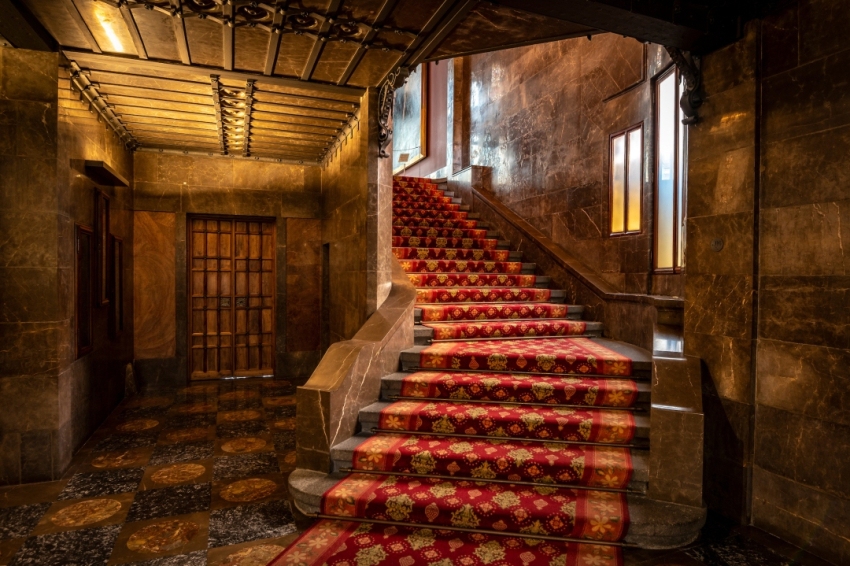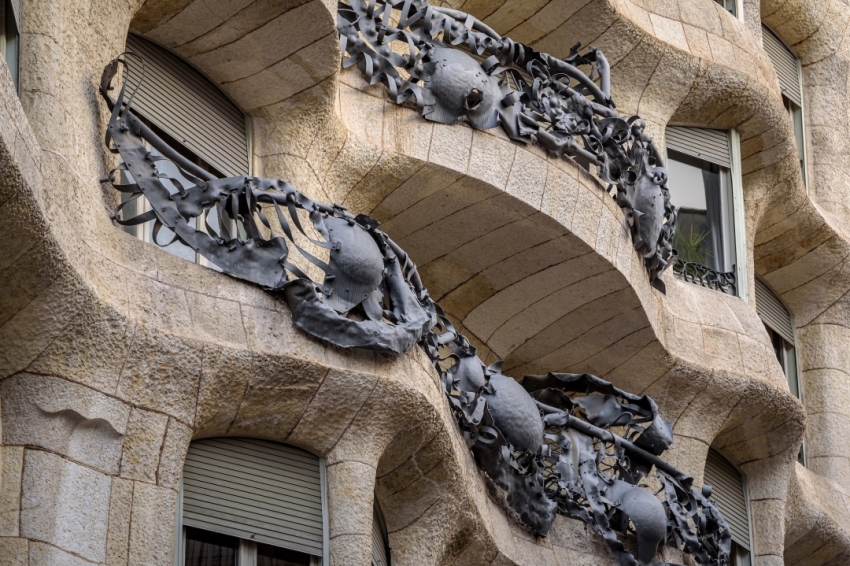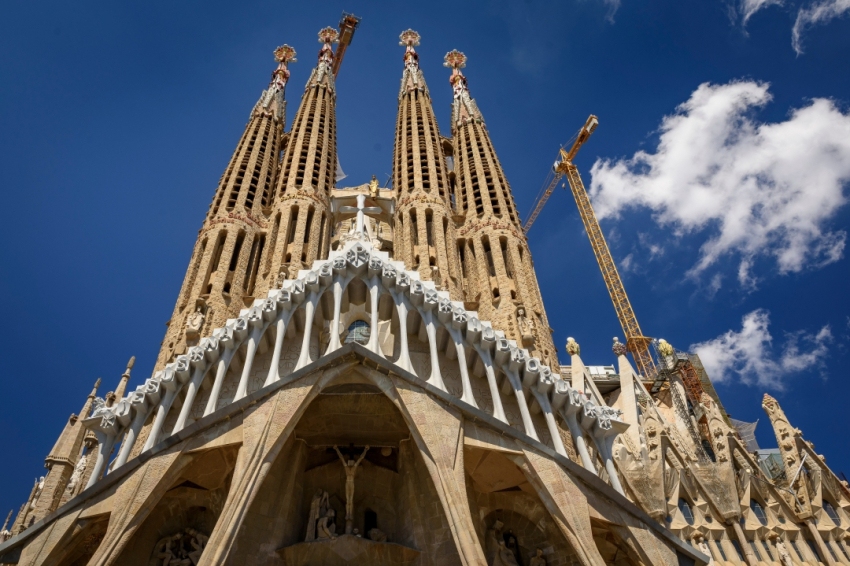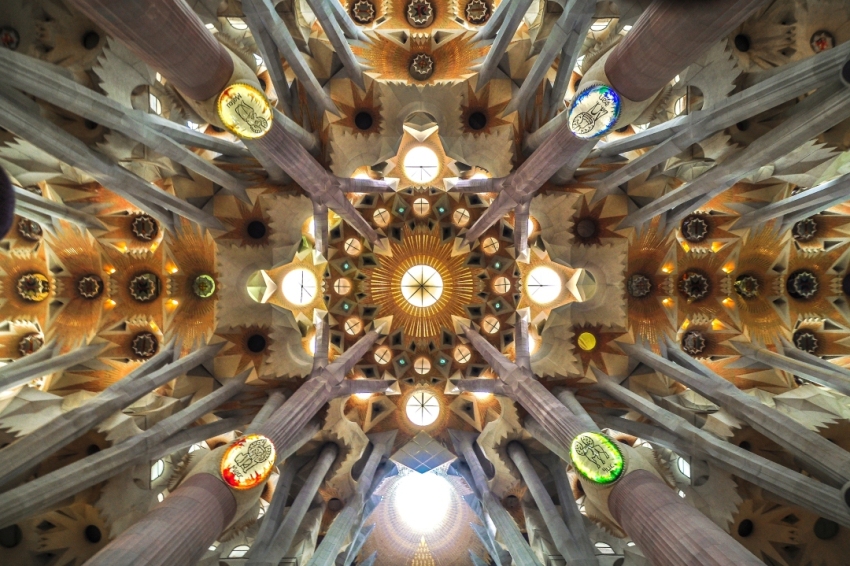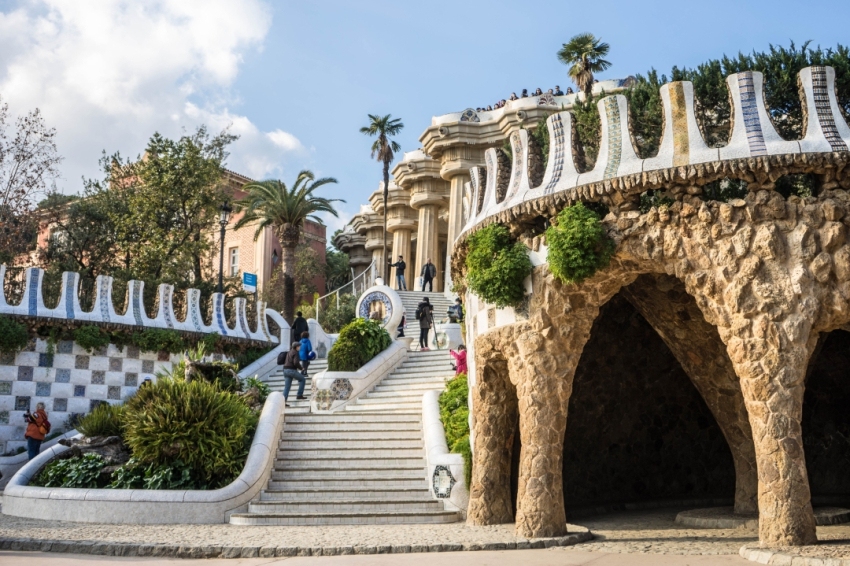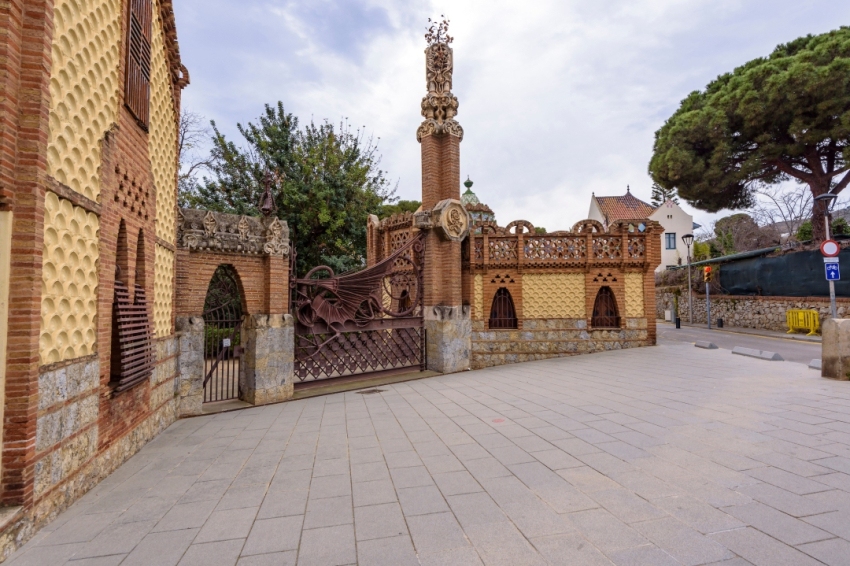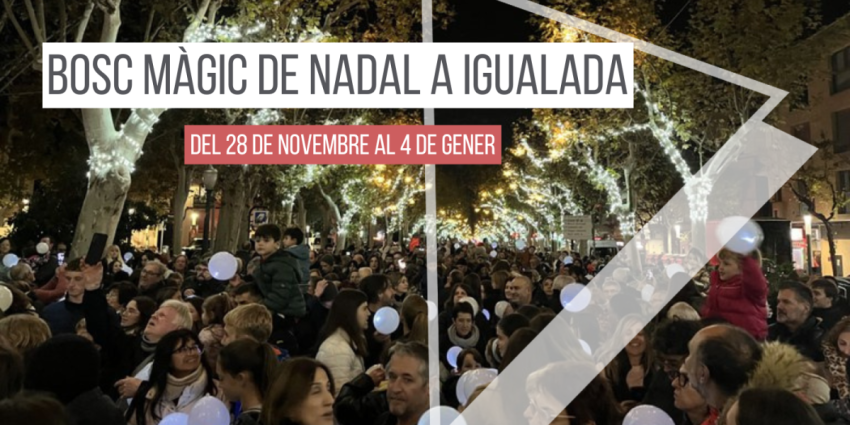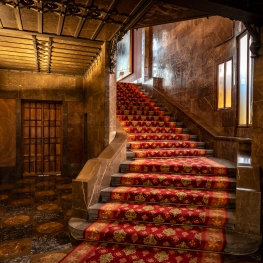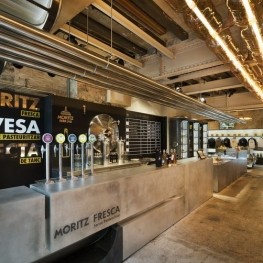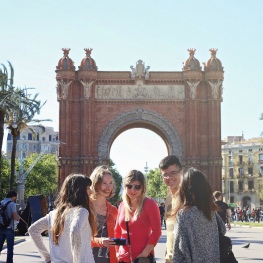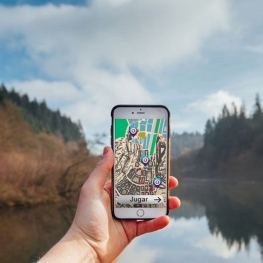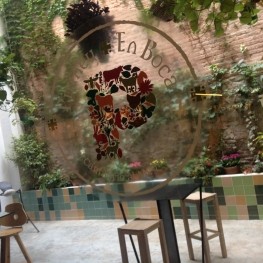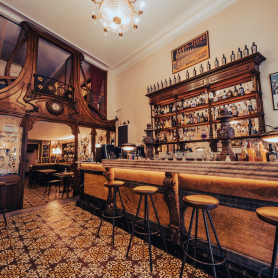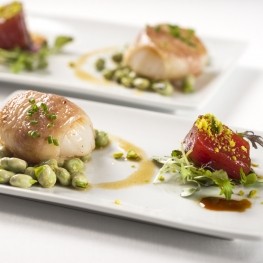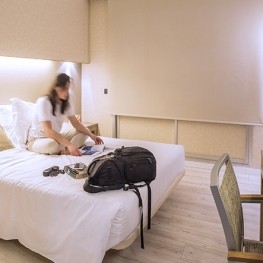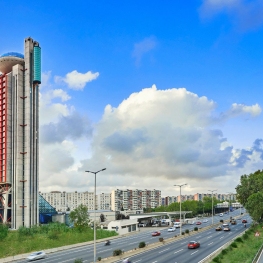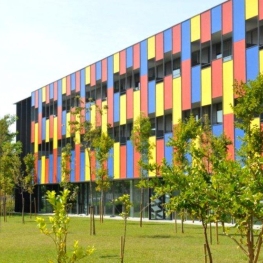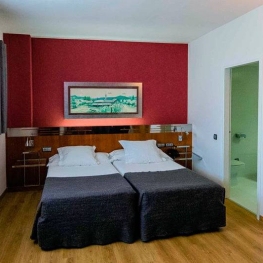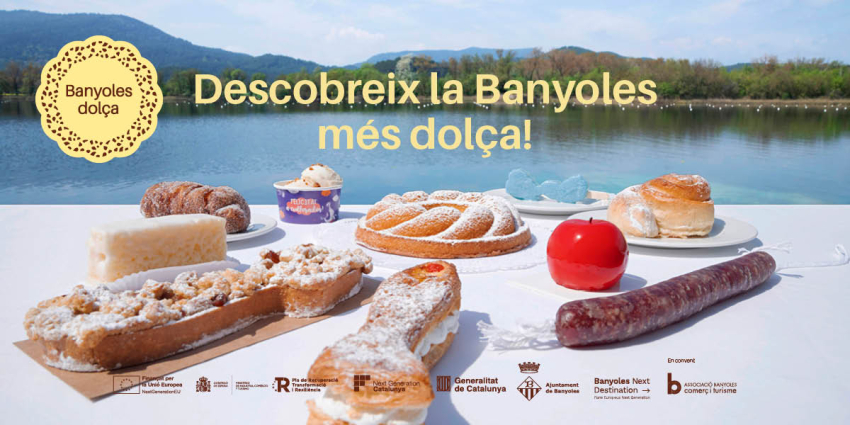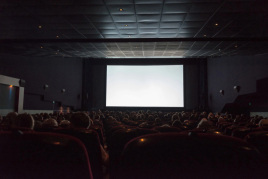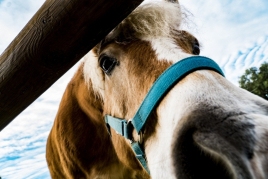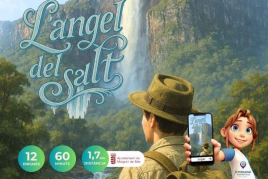Gaudí's Modernism Route
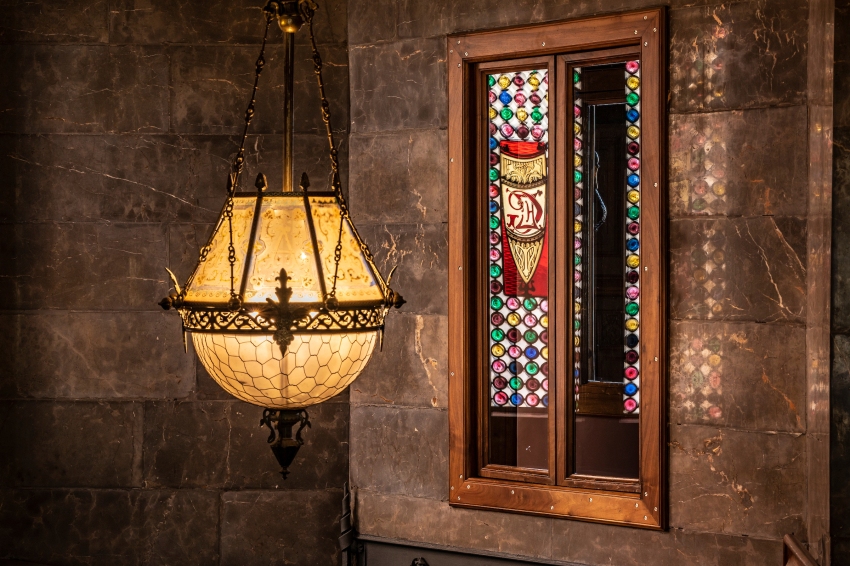
Modernism, the Catalan form of Art Nouveau, had Antoni Gaudí as the main representative of this style in Barcelona.
On this route we will review the emblematic places of this great architect in Barcelona and the not so well known but just as important to understand who this character was and what his work was in the Catalan capital.
Antoni Gaudí, the great teacher
 Born in Reus in 1852 and accidentally killed by a tram in Barcelona in 1926, Gaudí studied architecture in this same city at the height of the Renaissance, cultural and economic movement.
Born in Reus in 1852 and accidentally killed by a tram in Barcelona in 1926, Gaudí studied architecture in this same city at the height of the Renaissance, cultural and economic movement.
He was a man with deep roots and Christian convictions, with a great patriotic feeling for Catalonia and with some reminiscences of romanticism but, at the same time, he wanted to innovate and go down in contemporary history.
It is worth noting his figure as a prominent personality in the Barcelona world of the time and the followers and admirers he had among the Catalan bourgeoisie, a fact that made him assert the patronage of Eusebi Güell, which will largely mark his work.
Its eclectic architecture based on the forms of nature both in the exterior and in the interior is now a work recognized and awarded by different communities and international organizations.
First stop: Ciutat Vella
Following the route of the previous modernist route, we will begin the Gaudinian route very close to Las Ramblas.
On Calle Nou de la Rambla, we find the Güell Palace, built between 1886 and 1888 and declared a World Heritage Site by UNESCO in 1984. This construction was one of the most important projects commissioned by Güell to Gaudí.
This is a spectacular mansion with an abundance of decorative art. It is characterized by fusing Gothic art and Muslim art and having wrought iron as the undisputed protagonist.
On the façade you can see four bars of the señera, symbol of Catalan patriotism of the Güell family. Inside the building, it is important to highlight the use of brick in the basement (former stables) and the Catalan vault as an architectural resource.
Crossing the Ramblas, you reach the Plaza Real, where you can see lampposts (1879) by the same architect that accompany the Fountain of the Three Graces.
Second station: L'eixample
In Calle Casp, number 48, we find Casa Calvet (1898-1900), commissioned by the Calvet family of textile entrepreneurs. This building, which at first glance does not seem to be Gaudí 's, is a work with baroque details inside. In its accounting offices, management and boardrooms you can eat today in a fantastic restaurant with modern cuisine, the Casa Calvet Restaurant.
If we head towards the mountain, on Paseo de Gracia, we find Casa Batlló (1904) immersed in the " Apple of Discord ". This house, whose roof is reminiscent of fish scales, is a condensed version of Gaudí 's constructive delusion. Each ornamental detail has a special interest: each wrought iron fence, each stained glass window, each ceramic mosaic have been treated in a special way and all together make up a mosaic that causes many and diverse sensations upon seeing it. The work was declared a World Heritage Site. by UNESCO in 2005.
If we continue up Paseo de Gracia, we find another emblematic building of Gaudí's work: the Casa Milà (1905-1910). This block of houses, which was also declared a World Heritage Site by UNESCO in 1984, was commissioned by the Milà family and was initially considered as a large stone block. Hence its vulgar name “ La Pedrera ”. This house is special for its mysterious aura and for the different colors it has with the light at different times of the day. In addition, it is worth noting all the symbolic details it contains, including the roof where we can walk among the soldier-chimneys, the arches reminiscent of Romanesque art and the trencadissos (a technique similar to mosaic).
Continuing touring the works of the genius of the city, we arrive at the building that probably occupies more covers of tourist guides in Barcelona: the Sagrada Familia (1882-?). Few new things can be said about this ongoing construction, whose crypt, together with the Nativity Façade, was declared a World Heritage Site in 2005.
This is the most visited tourist spot in Catalonia with a count of 3 million annual visitors in recent years. Its unfinished state makes many come back to see its evolution. Many say that the Sagrada Família is the Bible turned into a building, since many of the passages of the holy book are projected onto it.
What cannot be denied is that this building marks and will forever mark the Skyline of the city of Barcelona and that its night lighting gives it a mystical and special air.
Third station: other Gaudí works in the city
In the neighborhood of Gracia, in the middle of narrow and slightly steep streets, we find Casa Vicens, built between the years 1883-1888 and declared a World Heritage Site by UNESCO in 2005. The use of straight lines, ceramic decorative and wrought iron at the entrance of the building. This was one of the architect's first works.
In the highest part of the city, on a peak that was previously better known as " the bald mountain ", we can visit the great Park Güell (1900-1914), a project for a residential neighborhood designed by Gaudí, where they had to build a complex of houses for bourgeois. The project imitated the style of the aristocratic class of England that lived in the so-called garden cities: they were houses located in the middle of nature, in a space totally designed so that the people who lived there could have a totally full social life within the enclosure. Unfortunately, the project was unsuccessful and only one of the houses was built, the show house, where Gaudí lived the last years of his life and where the Gaudí House-Museum can now be visited.
In the park we find the famous sculpture of the dragon, the square that rises above a room with a hypostyle roof and from which there are views of the city that you cannot miss or the entrance pavilions, accompanied by the famous ceramic trencadís for all sites. Park Güell was inscribed on the World Heritage List of Humanity in 1984.
From Park Güell we go to Torre Bellesguard or Casa Figueres (1900-1909), which Gaudí designed on top of an old castle located at the foot of Collserola. That is why the building has the appearance of a Gothic castle. The tower that ends in a conical shape and with the four-armed cross typical of the architect of architecture stands out. Once again, in this building, brick is once again the protagonist.
We now move to Paseo Manuel Girona, 55-57, where at the entrance of a residential area in the upper part of the city, is the street of the old Finca Miralles (1901-1902). Its wavy shape, its cover of broken ceramic pieces and the four-armed cross made of wrought iron, make this place unmistakably Gaudí 's.
In the area of the Royal Palace, we find the Güell Pavilions (1884-1887), at number 7, Avenida Pedralbes. These are two buildings that housed the Güell family's porters' house and the estate's stables. These are linked by a large wrought iron door with plant motifs, a medallion with the G for Güell and a large dragon.
Finally, another great architectural work by Gaudí: the Colegio de las Teresianas (1888-1889), at Calle Ganduxer numbers 85-105. This building is still a school and, therefore, its visits are restricted to Saturdays and Sundays. The most remarkable thing about the building is its interior, based on parabolic arches and its luminosity.
What to do
Fàbrica Moritz Barcelona
Barcelona (a 1.3 Km)The Moritz Factory Barcelona is a unique space, divided into three floors,…
Gimcanes GeoCats
BarcelonaDiscover Barcelona with GeoCats in the most convenient and fun way possible!…
Gymkana Digital Turística
BarcelonaTourist and cultural routes in a gymkhana format. Completely free and without…
Where to eat
Fàbrica Moritz Barcelona
Barcelona (a 1.3 Km)The Moritz Factory Barcelona is a unique space, divided into three floors,…
Bar Muy Buenas
BarcelonaFew words better define Muy Buenas than "coherence." Purely modernist decor, restored…
Restaurant Windsor
Barcelona (a 2.2 Km)The Windsor restaurant, located in Barcelona, is a benchmark of contemporary Catalan…
Where to sleep
Aparthotel Silver
Barcelona (a 3.1 Km)Aparthotel Silver is one of the recommended establishments in Barcelona. It offers…
Hotel Hyatt Regency Barcelona Tower
Barcelona (a 7.1 Km)The Hyatt Regency Barcelona Tower hotel will offer you an unforgettable experience…
Alberg Centre Esplai, Fundesplai
El Prat de Llobregat (a 11 Km)Discover the Centro Esplai hostel, in the municipality of El Prat de…
Aparhotel Atenea Barcelona
Barcelona (a 4.1 Km)The Aparhotel Atenea Barcelona, located in the heart of the Les Corts…


